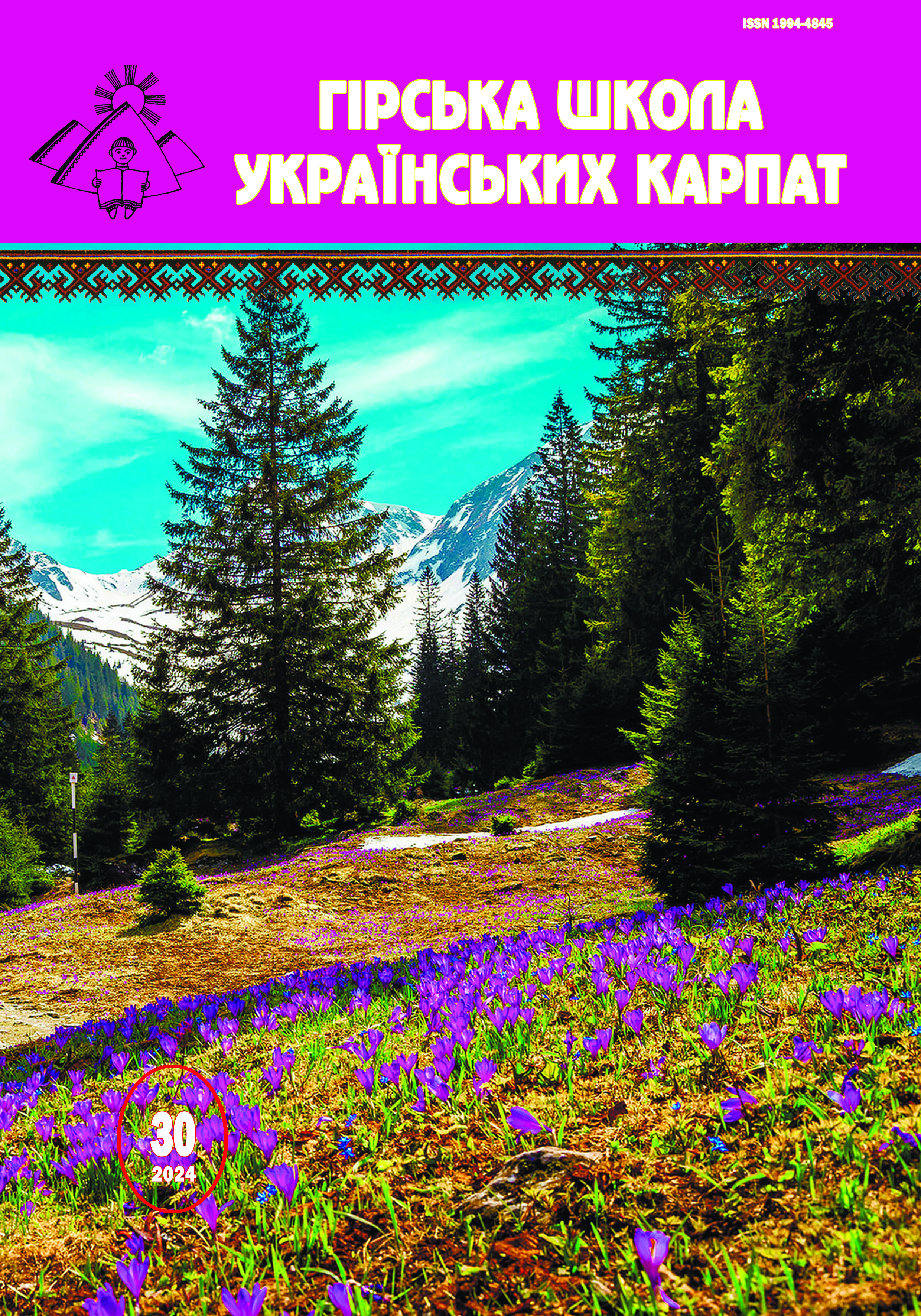КВЕСТ ЯК ЗАСІБ РЕФЛЕКСІЇ ПІД ЧАС ПРОВЕДЕННЯ STEM-ЕКСКУРСІЇ
DOI:
https://doi.org/10.15330/msuc.2024.30.46-51Ключові слова:
квест, STEM-екскурсія, рідкісні рослини, педагогічні технології.Анотація
Сьогодні в освітній процес активно впроваджуються новітні педагогічні технології, серед яких особливе місце посідають особистісно-орієнтовані, інтерактивні, інформаційно-комунікативні, технології розвитку критичного мислення. Навчальні технології спрямовані на формування мобільної особистості, здатної критично осмислювати інформаційні потоки, адаптуватися в сучасному соціумі й навчатися впродовж життя. Біологія як навчальний предмет має великі потенційні можливості для реалізації різних форм організації навчання. Різноманітні інтерактивні технології навчання біології дають змогу активізувати можливості школярів та учителів, продемонструвати сфери практичного застосування засвоєних знань, умінь і навичок. Однак без володіння базовими знаннями з основних розділів біології (ботаніки, зоології, анатомії, генетики і т.д.) такі форми малоефективні. Важливе місце серед педагогічних технологій займають квести, які навчають школярів знаходити необхідну інформацію, аналiзувати її, систематизувати і розв’язувати поставленi завдання. У сучасних педагогів дуже популярними стають STEM-екскурсії, які залучають учнів до процесу формування компетентностей за допомогою дослідницької діяльності. Мета таких екскурсій – залучити учнів до активного вивчення шкільних дисциплін, надати їм можливість застосувати отримані теоретичні знання на практиці. Одним із важливих етапів підготовки та проведення STEM-екскурсії є рефлексія. Її проводять по завершенню STEM-екскурсії у різних формах: оформлення альбому, проведення вікторини, створення відеофільму, складання графіків, діаграм, доповіді, комп’ютерної презентації чи усного опитування. У статті подано методичну розробку квесту «Сторінками Червоної книги» для узагальнення та систематизації знань учнів, отриманих у ході STEM-екскурсії у Карпатський біосферний заповідник. Ключові слова: квест, STEM-екскурсія, рідкісні рослини, педагогічні технології.


